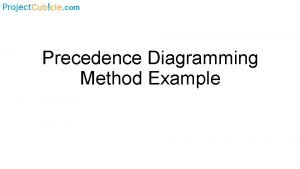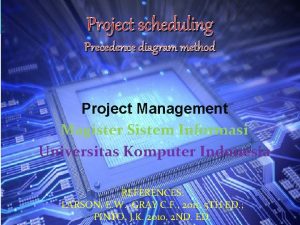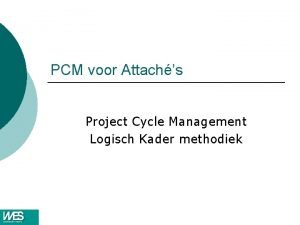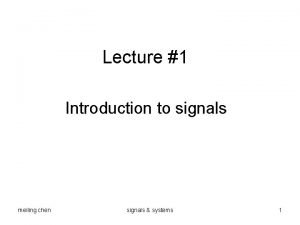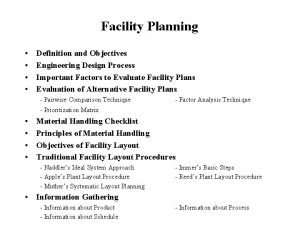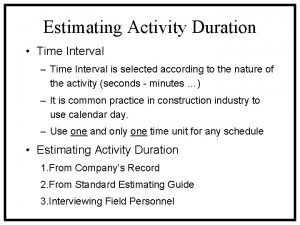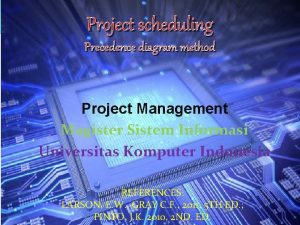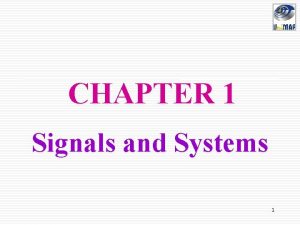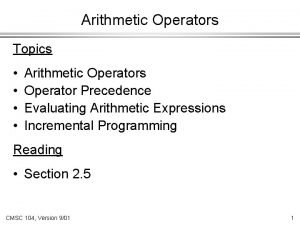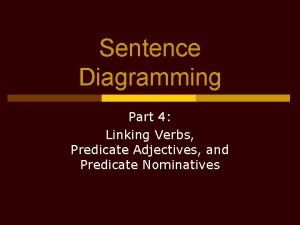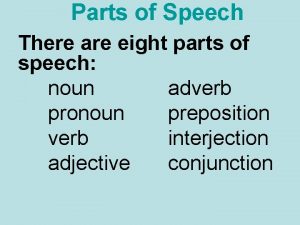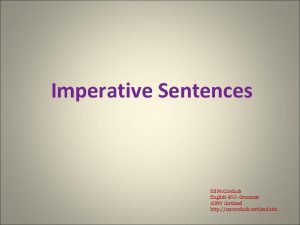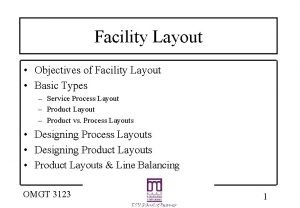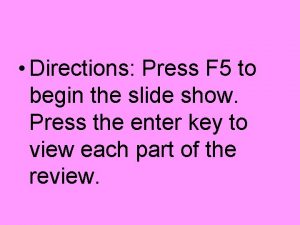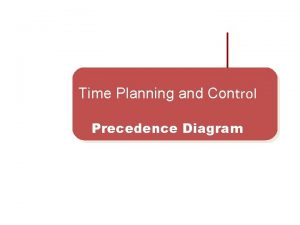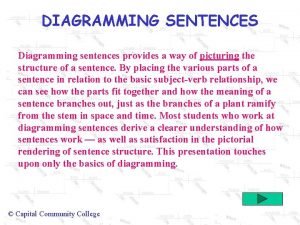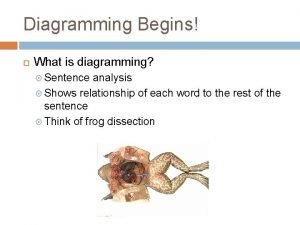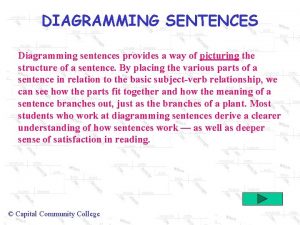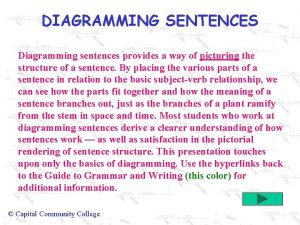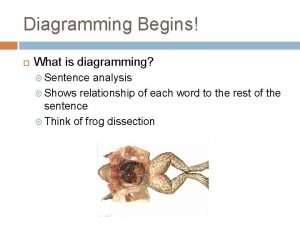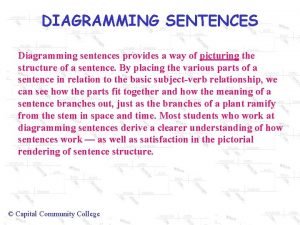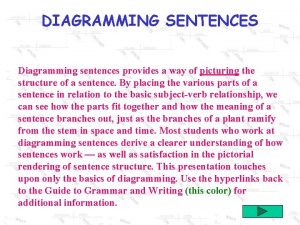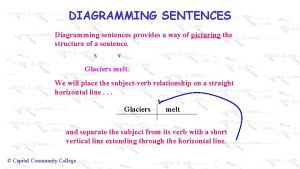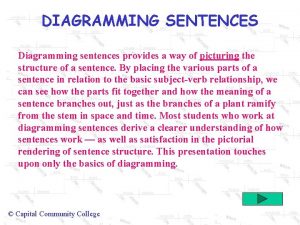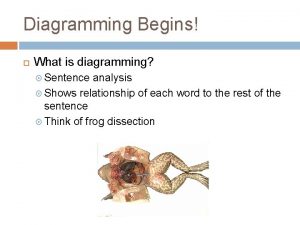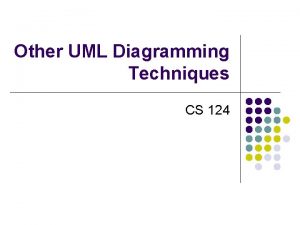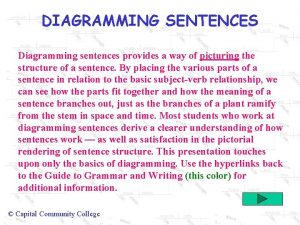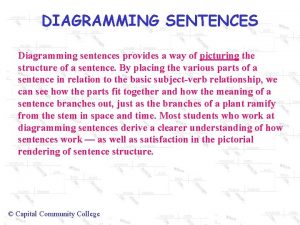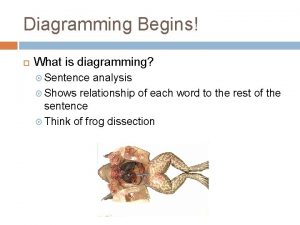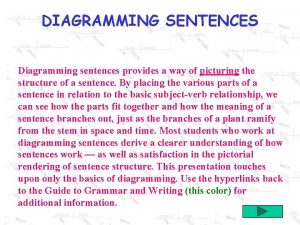Time Planning and Control Precedence Diagram Precedence Diagramming






![<Precedence Diagram Computation Forward Pass Computations Initial Time EFi + FSij [1] ESj = <Precedence Diagram Computation Forward Pass Computations Initial Time EFi + FSij [1] ESj =](https://slidetodoc.com/presentation_image_h2/f97b950715286a1b5686a9811541e5ec/image-7.jpg)
![<Precedence Diagram Computation Backward Pass Computations Terminal Time LSj - FSij [3] LFi = <Precedence Diagram Computation Backward Pass Computations Terminal Time LSj - FSij [3] LFi =](https://slidetodoc.com/presentation_image_h2/f97b950715286a1b5686a9811541e5ec/image-8.jpg)
















- Slides: 24

Time Planning and Control Precedence Diagram

<Precedence Diagramming ES D EF Activity ID LS TF q An important extension to the original activity-on-node concept appeared around 1964. q The sole relationship used in PERT/CPM network is finish to start type of dependency, with Fsij = 0. q Precedence diagramming includes precedence relationships among the activities. In Addition, one may specify a “lag time” associated with any of the precedence relationships, which can be used to account for overlapping times among activities. q The computation of activity times (published in 1973) is more complex than AON. LF

<Lag / Lead Times ES D EF Activity ID LS TF Ø In many cases, there is a delay between the completion of one activity and the start of another following or there is a need to show that one activity will overlap another in some fashion. Ø A successor "lags" a predecessor, but a predecessor "leads" a successor. Ø Lag time can be designated on a dependency line with a positive, negative, or zero value. Ø Limitations and Disadvantages of Lag: q Lag would complicate the scheduling process. q Lags are not extensively used except where the time effects are substantial for special project type. LF

<Precedence Diagramming Relationships Types and constraint 1. Start-to-Start (SSij) [(j) cannot start till (i) starts by amount of the SS] i SSIJ j The value of SSij is equal to the minimum number of time units that must be completed on the preceding activity (i) prior to the start of the successor (j). “Lag” is always applied to SS relation. Example SSij =3 [The start of (j) must lag 3 units after the start of (i)] 2. Finish-to-Finish (FFij) i FFIJ [(j) cannot finish till (i) finishes by amount of the FF] j FFij is equal to the minimum number of time units that must remain to be completed on the successor (j) after the completion of the predecessor (i). Example FFij =5 [The finish of (j) must lag 5 units after the finish of (i) ]

<Precedence Diagramming Relationships Types and constraint 3. Finish-to-Start (FSij) i FSIJ [(j) cannot start till (i) finishes by amount of the FS] j FSij is equal to the minimum number of time units that must transpire from the completion of the predecessor (i) prior to the start of the successor (j). Example FSij =6 [The start of (j) must lag 6 units after the finish of (i)] 4. Start-to-Finish (SFij) SFij' i [(j) cannot finish till (i) starts (rare)] j SFij'' SFij is equal to the minimum number of time units that must transpire from the start of the predecessor (i) to the completion of the successor (j). Example SFij (SFij ‘ + SFij “) =(4+6) =10 [The finish of (j) must lag 10 units after the start of (i)]

<Precedence Diagramming Relationships Types and constraint 5. Start-to-Start and Finish-to-Finish (ZZij): ZZij is a combination of two constraints, i. e. , a start-to-start and finish-tofinish relationship. It is written with the SSij time units first, followed by the FFij time units. Example ZZij =5 , 6 [The start of (j) must lag 5 units after the start of (i) (SSij = 5) & The finish of (j) must lag 6 units after the finish of (i) (FFij = 6)] ES Duration EF Types of constraints with lag/lead Durations ES Total Float LF EF Activity (j) Activity (i) LS Duration LS Total Float LF
![Precedence Diagram Computation Forward Pass Computations Initial Time EFi FSij 1 ESj <Precedence Diagram Computation Forward Pass Computations Initial Time EFi + FSij [1] ESj =](https://slidetodoc.com/presentation_image_h2/f97b950715286a1b5686a9811541e5ec/image-7.jpg)
<Precedence Diagram Computation Forward Pass Computations Initial Time EFi + FSij [1] ESj = Max. all i ESi + SSij EFi + FFij – Dj ESi + SFij - Dj [2] EFj = ESj + Dj ES D EF Activity ID FF LS LF TF
![Precedence Diagram Computation Backward Pass Computations Terminal Time LSj FSij 3 LFi <Precedence Diagram Computation Backward Pass Computations Terminal Time LSj - FSij [3] LFi =](https://slidetodoc.com/presentation_image_h2/f97b950715286a1b5686a9811541e5ec/image-8.jpg)
<Precedence Diagram Computation Backward Pass Computations Terminal Time LSj - FSij [3] LFi = Min. all j LFj - FFij LSj - SSij + Di LFj - SFij + Di [4] LSi = LFi Di ES D EF Activity ID FF LS LF TF

Precedence Diagramming Calculations <EXAMPLE For the given precedence diagram, complete the forward and backward pass calculations. Assume the project starts at T=0, and no splitting on activities is allowed. Also assume that the project latest allowable completion time (project duration) is scheduled for 30 working days. A Develop system spec. (D=8) D Test & debug program (D=6) SS 3 FF 4 B Write comp. program (D=12) SF 12 F Decument program (D=12) FS 0 SS 6 C Collect system data (D=4) FS 0 E Run program (D=6)

Precedence Diagramming Calculations <AON diagram A Develop system spec. (D=8) B Write comp. program (D=12) SS 3 FF 4 D Test & debug program (D=6) SF 12 F Decument program (D=12) FS 0 SS 6 C Collect system data (D=4) 6 12 D F FS 0 E Run program (D=6) 8 12 0 A B END 4 6 C E

Precedence Diagramming Calculations < Example Computation Forward Pass Computations Activity A Activity B Activity C 12 6 D 0 8 A 8 3 SS 3 FF 4 12 B SF 12 F 15 0 FS 0 SS 6 9 END 4 13 C 6 FS 0 E

Precedence Diagramming Calculations < Example Computation Forward Pass Computations Activity D Activity E Activity F 15 6 21 D 0 8 A 8 3 SS 3 FF 4 12 B 15 12 27 SF 12 F 15 27 0 FS 0 SS 6 9 4 13 C 21 6 FS 0 E 27 END 27

Precedence Diagramming Calculations < Example Computation Backward Pass Computations Activity F Activity E Activity D 15 0 8 A 8 3 SS 3 FF 4 12 B 6 21 D 18 3 24 15 15 12 27 SF 12 F 18 3 30 27 END 30 3 30 FS 0 SS 6 9 4 13 C 21 6 FS 0 E 24 3 30 27

Precedence Diagramming Calculations < Example Computation Backward Pass Computations Activity C Activity B Activity A 15 0 8 8 A 3 3 11 3 SS 3 FF 4 12 6 3 18 21 D 18 3 24 15 B 6 15 12 27 SF 12 F 18 3 30 27 END 30 3 30 FS 0 SS 6 9 4 13 C 14 5 18 21 6 FS 0 E 24 3 30 27

Precedence Diagramming Calculations Computing Slack Time (Float Time) Earliest Start Finish Activity ES EF A 0 8 B 3 15 C 9 13 D 15 21 E 21 27 F 15 27 Latest Start LS 3 6 14 15 24 18 Latest On Finish Slack Critical LF LS – ES Path 11 3 No 18 5 No 21 3 No 30 3 No

Example 2 ES D EF Activity ID FF LS LF TF Given the precedence network for a small engineering project with activity durations in working days, it is required to compute the activity times (ES, EF, LS, and LF) and total floats (TF) and then indicate the critical activities.

Example 2 Calculate the Early activity times (ES and EF). ES D EF Activity ID FF LS LF TF

Example 2 Calculate the late activity times (LS and LF). ES D EF Activity ID FF LS LF TF

Example 2 Calculate Total Float for an activity. ES D EF Activity ID FF LS LF TF

Example 2 Indicate the critical activities. ES D EF Activity ID FF LS LF TF

Notes on Schedule <HAMMOCK ACTIVITY Ø An activity that extends from one activity to another, but which has no estimated duration of its own. Ø It is time-consuming and requires resources, but its duration is controlled, not by its own nature, but by the two activities between which it spans. Ø Its ES and LS times are determined by the activity where it begins and its EF and LF times are dictated by the activity at its conclusion. Ø Examples: Dewatering, Haul road maintenance

Notes on Schedule <MILESTONES Ø Milestones are points in time that have been identified as being important intermediate reference points during the accomplishment of the work. Ø Milestone events can include dates imposed by the customer for the finishing of certain tasks as well as target dates set by the project manager for the completion of certain segments of the work.

Notes on Schedule <MILESTONES Ø Distinctive geometric figure is preferred to represent a milestone (circles, ovals, or other shapes) can be used. Ø Any information pertaining to a milestone and considered to be useful may be entered.

Notes on Schedule Reducing Project Duration How can you shorten the schedule? Via Ø Reducing scope (or quality) Ø Adding resources Ø Concurrency (perform tasks in parallel) Ø Substitution of activities
 Precedence diagramming method
Precedence diagramming method Precedence diagram
Precedence diagram Precedence diagramming method
Precedence diagramming method Chen
Chen Start time end time and elapsed time
Start time end time and elapsed time Precedence diagram
Precedence diagram Facility planning objectives
Facility planning objectives Precedence diagram
Precedence diagram Precedence diagram method
Precedence diagram method Precedence rule in signals and systems
Precedence rule in signals and systems Code of diplomatic etiquette and precedence
Code of diplomatic etiquette and precedence What is operator precedence and associativity
What is operator precedence and associativity What is operator precedence and associativity
What is operator precedence and associativity Code of diplomatic etiquette and precedence
Code of diplomatic etiquette and precedence Code of diplomatic etiquette and precedence
Code of diplomatic etiquette and precedence Proactive planning and reactive planning
Proactive planning and reactive planning Short, medium and long term planning in education
Short, medium and long term planning in education Corpus planning and status planning slideshare
Corpus planning and status planning slideshare Diagramming predicate nominatives
Diagramming predicate nominatives Eight parts of speech
Eight parts of speech Diagramming arguments
Diagramming arguments Unexpressed subject in imperative sentence
Unexpressed subject in imperative sentence Facility layout
Facility layout Participial phrase diagramming
Participial phrase diagramming Diagramming indirect objects
Diagramming indirect objects
